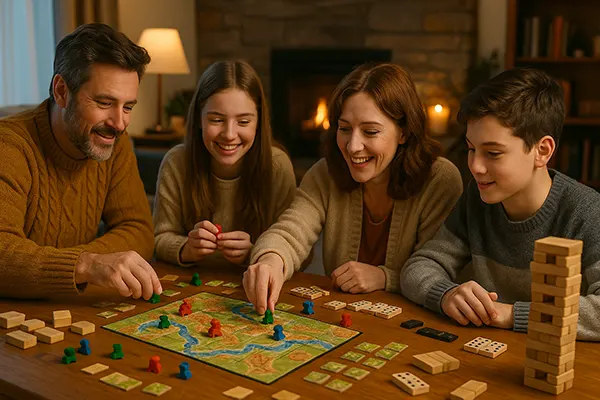
Escape Room at Home: How to Create a DIY Apartment Quest
Escape rooms have become a popular form of interactive entertainment, combining logical thinking, teamwork, and creativity. While traditional escape rooms require visiting a dedicated location, creating one in your own apartment is entirely possible and can be just as exciting. With the right planning, props, and storyline, you can design a memorable experience for friends or family without leaving your home. This approach is ideal for parties, family gatherings, or simply adding some fun to an evening indoors.
Planning the Theme and Storyline
The foundation of any great escape room lies in its narrative. Choosing a compelling theme helps set the atmosphere and gives players a clear mission to accomplish. Whether you opt for a detective mystery, a treasure hunt, or a science lab experiment gone wrong, ensure the storyline is consistent from start to finish. Consider the participants’ age and interests to make the game engaging and accessible.
Once you have the theme, create a backstory that explains why the players are “locked in” and what they must achieve to escape. For example, in a spy-themed scenario, they might need to recover stolen data before time runs out. This context will guide your choice of puzzles and props, ensuring every element fits seamlessly into the overall plot.
It’s also important to set a clear time limit, typically between 30 and 60 minutes. This keeps the game dynamic and adds a sense of urgency, motivating participants to work together efficiently while maintaining excitement throughout the challenge.
Designing Logical Puzzles
Puzzles are the heart of the escape room experience. They should challenge players without being impossible to solve. Start by creating a list of different puzzle types—such as code-breaking, matching patterns, deciphering riddles, or unlocking hidden compartments. Variety keeps the experience fresh and caters to different problem-solving skills within the group.
Physical clues, such as keys hidden in books or UV ink messages, can add an extra layer of immersion. For a tech-savvy approach, you could integrate QR codes leading to digital hints or sound files that advance the story. Ensure each puzzle logically connects to the next so players feel a sense of progression as they move closer to the solution.
Finally, test your puzzles before game day. Ask a friend or family member to try them and provide feedback on difficulty, flow, and clarity. Adjusting based on these insights will help you avoid frustration during the actual event and create a more enjoyable experience for all participants.
Setting the Scene and Atmosphere
The environment plays a crucial role in creating immersion. Start by rearranging furniture to fit the story—block off unused areas, create barriers with sheets, or set up specific “zones” for different puzzle stages. Lighting is equally important: dim lights, coloured bulbs, or candles (battery-operated for safety) can set the mood effectively.
Props are essential for reinforcing the theme. For a treasure hunt, you might include chests, maps, and coins. For a laboratory theme, think beakers, test tubes, and scientific charts. Many of these items can be crafted from inexpensive materials or borrowed from friends. Sound effects and background music can further enhance the atmosphere, drawing players deeper into the experience.
Make sure the setting remains practical. Paths should be clear to avoid tripping hazards, and any fragile objects should be kept out of reach. Balancing immersion with safety ensures everyone enjoys the game without unnecessary risks.
Incorporating Clues and Hints
Even the best-designed puzzles can sometimes stump players. To keep the game moving, prepare a hint system in advance. You might decide to allow a set number of hints, delivered via text message, walkie-talkies, or handwritten notes slipped under a door. This helps maintain the tension without letting frustration take over.
Clues should be thematically consistent. In a mystery scenario, hints could come in the form of police reports or intercepted messages. In a fantasy setting, they might be magical scrolls or cryptic runes. The key is to provide just enough information to push players forward without giving away the full answer too quickly.
Timing is important when delivering hints. Offer them when players have clearly exhausted their options, ensuring the game remains challenging yet fair. Well-timed assistance can transform a stalled group into an energised team, eager to tackle the next challenge.

Running the Game and Debriefing
On the day of the event, brief players on the rules before starting. This includes the time limit, safety guidelines, and any boundaries for where they can search. Having a game master—either yourself or another person—ensures smooth progression, as they can monitor progress, offer hints, and handle any technical issues that arise.
During the game, observe how players interact with the puzzles. This can help you make real-time adjustments if something isn’t working as intended. Avoid interfering too much, but be ready to step in if a puzzle is broken or misunderstood. Keeping the momentum steady is key to maintaining excitement.
After the escape room ends, gather everyone for a debrief. Discuss which puzzles they enjoyed most, where they struggled, and what moments stood out. This not only provides closure but also helps you improve your design for future games. A short recap of the story’s resolution adds a satisfying narrative finish.
Adapting for Different Groups
One of the strengths of a home escape room is its adaptability. You can adjust puzzles for children, making them simpler and more visual, or increase complexity for experienced players. Themed decorations can also be tailored—cartoonish for younger audiences, or more realistic and intense for adult participants.
Consider accessibility when designing your game. Ensure puzzles can be solved without needing specific physical abilities unless clearly stated in advance. Providing alternative clue formats, such as both visual and auditory hints, ensures inclusivity for all players.
Finally, remember that replayability is possible. By swapping out puzzles, altering the storyline, or changing the layout, you can reuse your setup multiple times, giving your investment in props and design even greater value.



